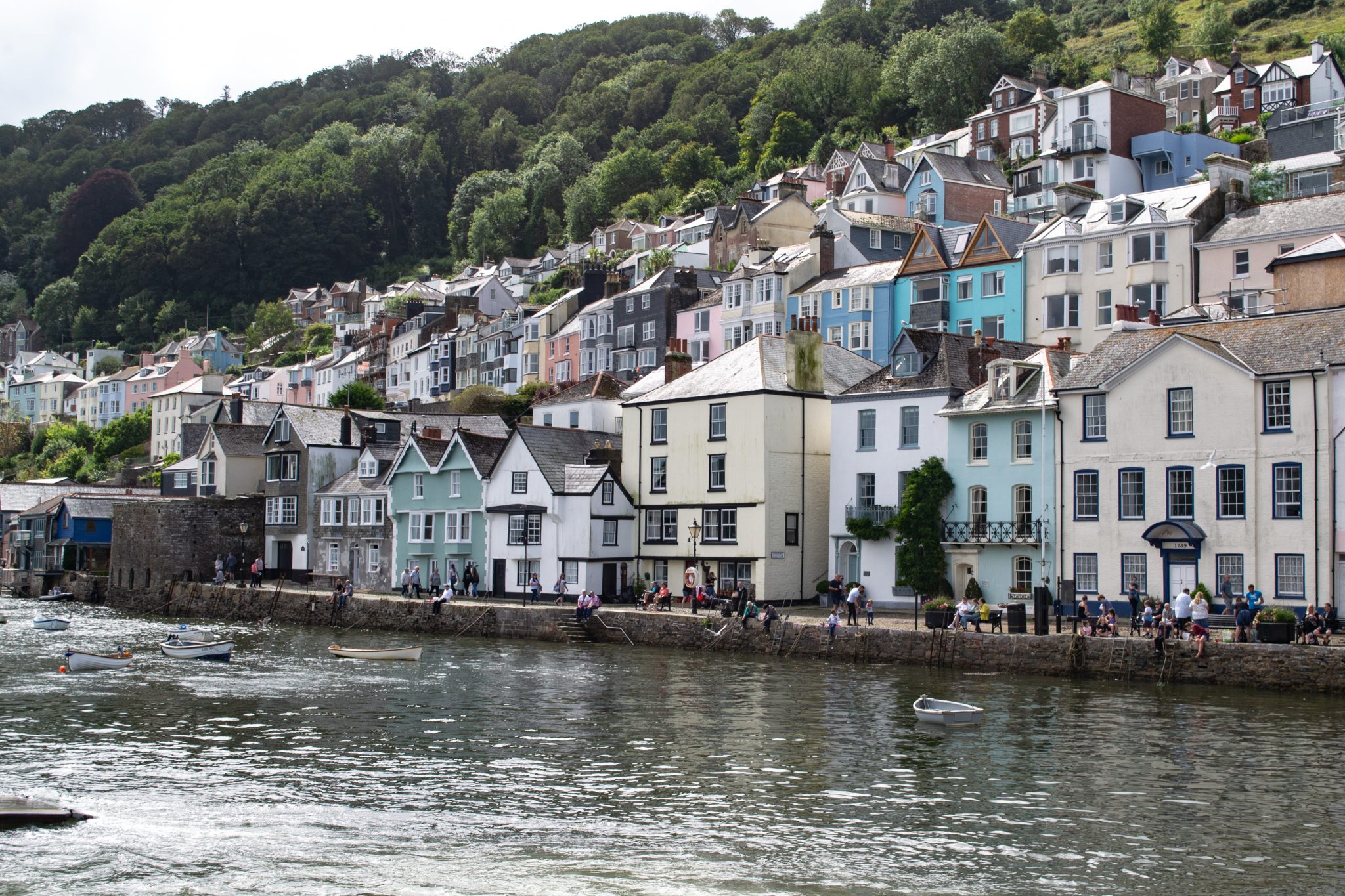Dartmouth is one of those rare places where every corner offers something worth capturing. With its timeless harbour views, pastel-coloured buildings, wooded hillsides, and riverside charm, the town is a favourite not only among holidaymakers, but also among photographers — both amateur and professional. Whether you’re visiting with your family, exploring on your own, or working on a creative project, Dartmouth gives you the perfect backdrop for meaningful, memorable photography.
In this guide, we’ll explore the locations, times of day, and simple techniques that help bring out the best of Dartmouth through the lens. We’ll also offer useful advice if you’re planning to turn your photo sessions into something more than just a hobby.
Start Your Journey at the Embankment
For most visitors, the first encounter with Dartmouth is along the Embankment — a wide walkway running beside the River Dart. From early morning until sunset, this spot offers ever-changing scenes that invite photography. Watch sailboats drift by, seagulls glide overhead, and the water reflects the pastel facades of town buildings.
This is a perfect place to warm up your lens. You’ll find chances for panoramic landscapes, motion shots of boats and ferries, and close-ups of architectural details. The Embankment is also a great background for a commercial photographer, especially if you’re planning a professional-style photo shoot. You might need permission from the local council for commercial use.
Capturing the History of Dartmouth Castle
About a mile south of town, Dartmouth Castle stands proudly at the mouth of the Dart Estuary. This iconic site is more than a piece of history — it’s a dramatic location for striking images, particularly if you enjoy coastal photography. The stone towers and surrounding cliffs provide texture and atmosphere that contrast beautifully with the sea and sky.
When the tide is out, rocky terrain opens up at the base of the castle, creating excellent foreground interest for landscape shots. Try different vantage points from the footpath to the east or down by the shoreline to experiment with depth. A wide-angle lens works especially well here, allowing you to fit in both the castle and its surroundings.
For portrait photographers, this location is ideal for solo or fashion-style shoots with a bold natural backdrop. Just remember to check the weather — misty or overcast days can add mood, while sunny skies create clarity and strong contrast.
Charming Streets and Coastal Colour
Dartmouth’s character is also found in its streets. Wandering through the town centre reveals narrow lanes lined with colourful facades, unique shops, and traditional pubs. These details make for fantastic storytelling images — the kind that capture the feeling of a place, not just its landmarks.
Bayard’s Cove is a particularly photogenic area. Its cobbled paths and old sea wall offer great framing opportunities, while the historic buildings tell their tale. Foss Street is another highlight — a narrow pedestrian lane known for its boutiques and art galleries. Shoot during the early hours if you want clear views without the crowds.
Photography here can feel spontaneous and relaxed. Look for natural interactions — children peeking into shop windows, dogs lounging at café doors, or boats unloading fresh seafood. These candid moments make your photos truly personal and reflective of Dartmouth’s way of life.
Dartmouth by Water
If you’re looking for a unique angle, take a short boat ride. The ferries and river cruises operating along the Dart offer a fresh way to see Dartmouth — from the water. These trips are not only relaxing but also surprisingly fruitful for photography.
From the deck, you can capture views of the town’s hillside layout, dotted with pastel homes and framed by greenery. The juxtaposition of land and water, along with the distant hills of Kingswear across the river, makes for compelling landscape photos. Don’t forget to turn your lens towards smaller details — ropes, lifebuoys, and river wildlife add visual variety.
One of the best photo-friendly journeys is the ferry to Greenway, which also connects you with Agatha Christie’s former holiday home. The approach offers sweeping views of the riverbanks and is a favourite spot for those who love soft light and tranquil scenes.
The South West Coast Path and Day Hikes
If you’re willing to walk a little farther, the South West Coast Path delivers stunning photo opportunities. From Dartmouth Castle, you can follow the trail along the coast for dramatic sea views, wildflowers, and clifftop panoramas.
This path is especially rewarding for landscape photographers and anyone interested in shooting scenes of untouched natural beauty. The coastal light shifts throughout the day — early mornings offer cool tones and calm air, while evenings glow with warmer, softer hues.
Wear comfortable walking shoes and bring water and snacks if you’re planning a longer hike. A camera with a polarizing filter can help reduce glare and enhance colours, especially in scenes with sky and sea.
Photographing Dartmouth’s Events
Dartmouth hosts many events throughout the year, including the popular Royal Regatta and the Dartmouth Food Festival. These lively gatherings are full of colour and energy, offering plenty of great photo opportunities. From sailing races to local food stalls and live music, there’s always something memorable to capture.
When shooting events, try to blend in and observe before taking photos. You’ll get more natural, compelling images this way. Focus on facial expressions, movement, and moments of interaction. Suppose you’re taking part in a festival or visiting during the high season. In that case, it’s also a great chance to practice low-light or night photography — particularly along the harbor, where string lights reflect off the water.
Lighting Tips for the Dartmouth Area
Good lighting can make or break a photograph. Fortunately, Dartmouth offers fantastic light almost year-round, especially during early morning and just before sunset. These “golden hours” provide soft, angled light that adds warmth and depth to your photos.
Overcast skies aren’t necessarily bad either — they create natural diffusion that reduces harsh shadows and helps highlight colour. If you’re working on more structured photography (like portraits or product shots), this kind of lighting can be very useful.
And while the midday sun can be harsh, it also works well for capturing crisp details in landscapes and buildings. Be mindful of overexposure and use shadows creatively.
Simple Gear That Works for Everyone
You don’t need a full studio setup to photograph Dartmouth. Some of the best travel shots are taken with minimal equipment. A mid-range DSLR or mirrorless camera with a 35mm or 50mm lens is often enough. If you’re more experienced, a wide-angle lens (like 16–35mm) is great for landscapes and architecture.
For casual visitors, a good smartphone with a decent camera is still a powerful tool. Use manual focus when possible and explore editing apps to enhance your shots afterward. Tripods can help in low light or when shooting longer exposures of the river or night scenes.
And of course, don’t forget spare batteries, memory cards, and a waterproof cover — Dartmouth’s weather can change quickly.
Why Photography Matters Here
Taking photos in Dartmouth isn’t just about getting pretty pictures — it’s about connecting with the place. Each image tells a story of where you’ve been and what you’ve noticed. It’s a way to share your perspective and preserve your memories.
If you’re serious about creating a portfolio or capturing professional-level images, consider working with or learning from a photographer who specializes in natural light and on-location work. They often know the best times, techniques, and hidden spots around town that even some locals might miss.
Ready to Explore?
Whether you’re an experienced photographer or just someone who loves to take great travel pictures, Dartmouth will meet you with light, colour, and character. From riverside walks to dramatic cliffs and lively markets, the town offers countless opportunities to see the world a little differently — and to capture it for years to come.
Happy shooting!






